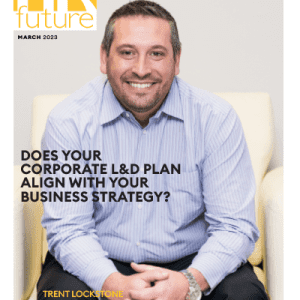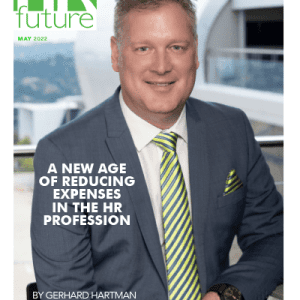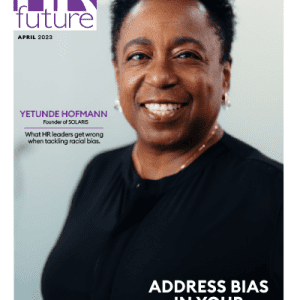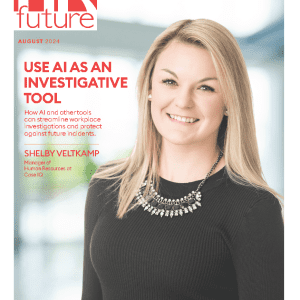This is the new face of future-fit businesses.
Adapting to the ‘new normal’, as we try to navigate this pandemic and remain productive, has been a new, overwhelming experience for all. Many anxiously await a return to the world we knew pre-Covid; however, the reality is that some things – including our workplaces – have changed for ever. With a new order prevailing, is your business keeping up?
Given that people are intricate beings, reacting differently to situations and evolving as circumstances change, as HR Professionals, ours is amongst the more challenging roles. Balancing employee wellbeing and development with organisational success is multifaceted and, with so many more dynamics at play, some may argue this could be a process of trial and error.
Emphasis on empathy
If there is one thing we can all agree on, it is that this pandemic continues to have a psychological impact on everyone, so the focus should not just be on health but rather holistic wellness. Employers must take the employee’s full being into account, appreciating the impact of multiple pressures, anxieties and fears. In understanding that employees have complex lives outside of the workplace and prioritising wellness, it is imperative to approach any employee engagement strategy with consideration and empathy.
Talent retention nowadays involves more than just competitive salaries and benefits, and the pandemic has emphasised the importance of ensuring that employees have access to resources such as counselling services. While some align with the belief that we need to ‘leave our feelings at home’ when we enter the workplace, the reality is that this is an archaic and ill-informed approach. We just cannot expect employees to compartmentalise the mental and psychological impact that this year has had on them.
More so, with so many employees working from home, we need to also consider the added complexities of ‘living at work’. Now, more than ever, we need to provide a safe environment, one where the individual’s overall wellbeing is just as important as their contribution to the bottom line. Accordingly, businesses must revisit talent retention strategies to ensure these are relevant and responsive to existing dynamics.
Circle of trust
Since the onset of this pandemic, uncertainty has been in abundant supply. We are all figuring things out as we go along, trusting our experience and instincts, understanding sentiment and exercising common sense. For business leaders, in many instances, this is translating to the tough decision of organisational restructure involving retrenchments. Such developments may have left some feeling anxious about whether or not they are next, while others may be experiencing survivors’ guilt.
To move forward stronger as an organisation, it is essential to instil trust in your relationships with employees and establish meaningful connections.
As a leader, you must:
- be transparent in your way of doing things;
- regularly and consistently communicate with your employees;
- remain honest and authentic at all times; and
- lead by example.
The current context also presents an opportunity for employers to be more creative in their engagement. Swap out the newsletters for a virtual get together where employees will be free to ask burning questions or seek assurances. There is also the opportunity to make these less formal so that employees can feel relaxed or less intimidated by the thought of an engagement with management. Division leaders also need to prioritise having “one-on-ones” or discussions with smaller groups to be candid (in a considered manner) but also reassure their team members of the facts, while also ensuring that everyone is better than just coping. We cannot underestimate the power that these personal relationships have on the overall success of the business.
Hybrid – in every sense
Perhaps the biggest lesson from this pandemic is much can change in the blink of an eye. We must, therefore, be confident about devising new ways of approaching even the simplest tasks. The phrase, ‘Well, that’s how things are done’ should not feature in anyone’s vocabulary because as we’ve all learned, things can be done very differently.
The change to remote working, which seemed decades away, has been swifter and more successful than we could ever have imagined. While some organisations now have hybrid workplaces, the pandemic presented us with a unique opportunity to determine what type of environment different employees thrive in. Some may enjoy the water cooler conversations with co-workers at the office, others prefer the solitude of working from home, and then there are those in-between.
Ask yourself …
- How do we ensure that different personalities have more expansive and convenient options while continuing to bring their A-game?
- Is it necessary to enforce arbitrary rules about being physically present in the office every day, if one prefers to work from home?
- How does that affect the overall culture of the business, and how can we ensure that employees are still able to collaborate with others, effectively?
- Having said this, if your employees prefer to work from home only because they don’t like coming into the office, then it is time to urgently reassess your organisational culture.
To keep winning …
There are many questions leaders need to ask themselves to establish what works best for their organisation and those who are at the helm of it. It is time to dispose of rigid approaches. It is no longer about one or the other. The new normal is about:
- options, options, options;
- greater emphasis on employee wellbeing and responding to their evolving needs;
- diversity in thinking and application;
- collaboration in unique ways; and
- getting out of one’s comfort zones.
Businesses that get this right will benefit from the highest levels of loyalty and elevated productivity, moving forward stronger and more resilient than ever before.
LIESEL DENTLINGER is the Human Resources Director at Omnia Group in Johannesburg, South Africa.


























